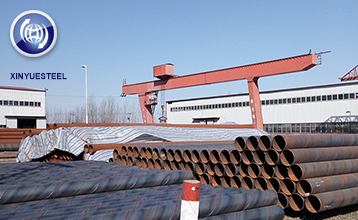Take multiple measures to improve carbon emissions trading-Part 2
Aug. 30, 2021
In this context, the "two hands" of the government and the market need to cooperate and coordinate more closely to balance the "dual carbon" goal with the multiple goals of stable economic development and technological innovation in energy conservation and emission reduction. We need to focus on the following aspects: First, under the requirements of the "dual carbon" target, the annual growth rate of carbon emission allowances will gradually slow down and even reduce allowances. This means that the amount of allowances that can be used for transfer will become tighter. Other conditions remain unchanged, and the price of carbon emission rights will show an upward trend. However, the unilateral increase in carbon emission rights is expected to involve greater market risks, and the excessively high cost of corporate emission reduction is detrimental to the steady growth of the economy and the stability of prices. The second is the forward price signal provided by the carbon emission rights futures market, which can circumvent the defects of spot signals and guide the effective allocation of resources. However, unilateral market expectations are likely to be amplified by the highly leveraged futures market, and there may even be the risk of "long shorting" .

Therefore, the carbon emission rights trading market can continue to be improved in the following aspects: First, in terms of laws and regulations, strictly regulate policy formulation and implementation behavior. Second, we need to start from the supply side of the carbon emission rights market. In addition to quota trading, increase the scale of carbon offset projects entering the market, increase the proportion of carbon offsets that can be used, increase the supply of carbon emission rights, and avoid the formation of a unilateral market. At present, from the perspective of pilots in various regions, it is usually stipulated that the proportion of carbon offset using CCER cannot exceed 5% to 10% of the initial allowance. In addition, the CCER project's verification policy lacks continuity and stability, the supply of verification capabilities is insufficient, and the degree of verification standardization is insufficient. The third is to increase support for energy conservation, emission reduction, and clean energy technology innovation, and increase the willingness of emission reduction companies to achieve self-emission reduction through technological innovation. This will also objectively reduce the demand for carbon emission reduction rights and avoid rapid price increases. Fourth, in addition to the existing large-scale power and other key industries, as much as possible, more companies and industries should be included in the scope of mandatory emission reduction, so as to ensure that the responsibility and obligation of emission reduction are shared by the whole society, and accelerate the "dual carbon" Goal achieved. This has also expanded the market scale to a certain extent, improved the surplus adjustment capacity of allowances, and eased the slowdown or even reduction of carbon emission allowances. Fifth, in terms of participating entities, in addition to the participation of mandatory carbon emission reduction companies and carbon offset companies, the diversification of participating entities can be gradually realized, allowing banks, funds and other financial institutions to join, increasing market liquidity and promoting effective price formation . On this basis, the development of carbon emission futures transactions involving more diversified entities will help form a benign interactive relationship in the futures and spot markets. Fifth, in addition to the national market, the regional voluntary carbon emission reduction trading market can also play a supplementary role, relying on more market-oriented means to enable enterprises and even individuals to spontaneously include in the ranks of carbon emission reduction, accelerating the "dual carbon" Goal achieved.



